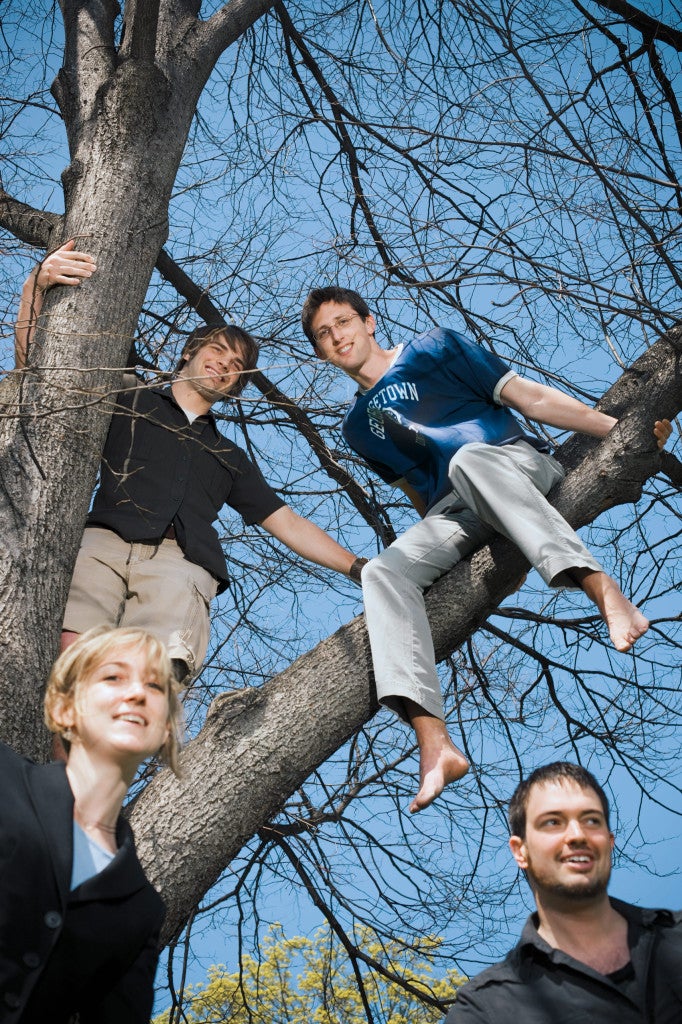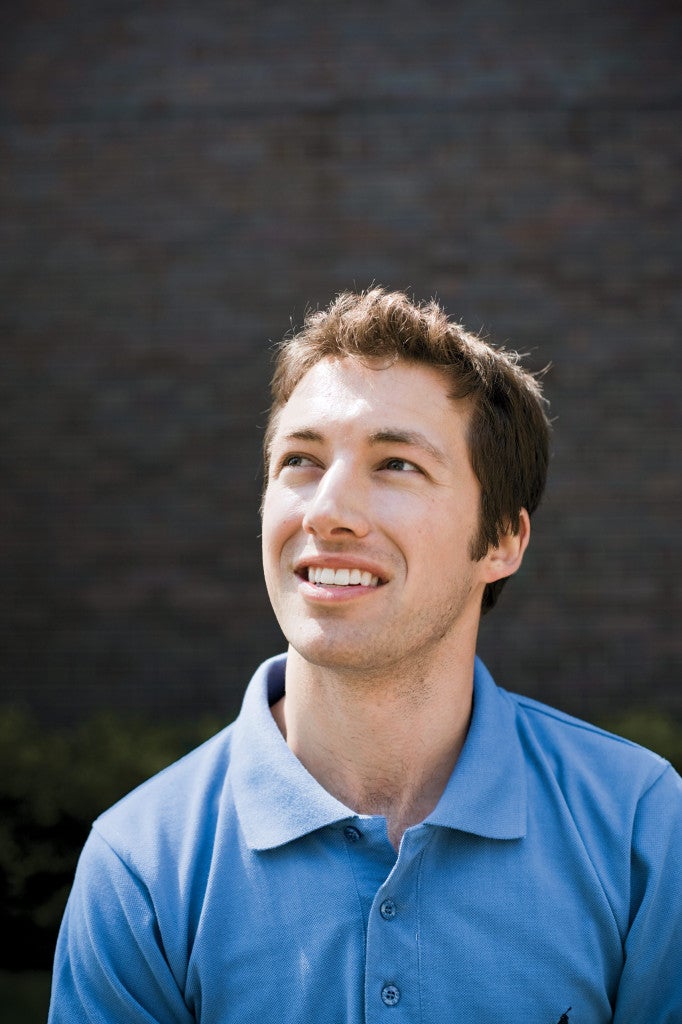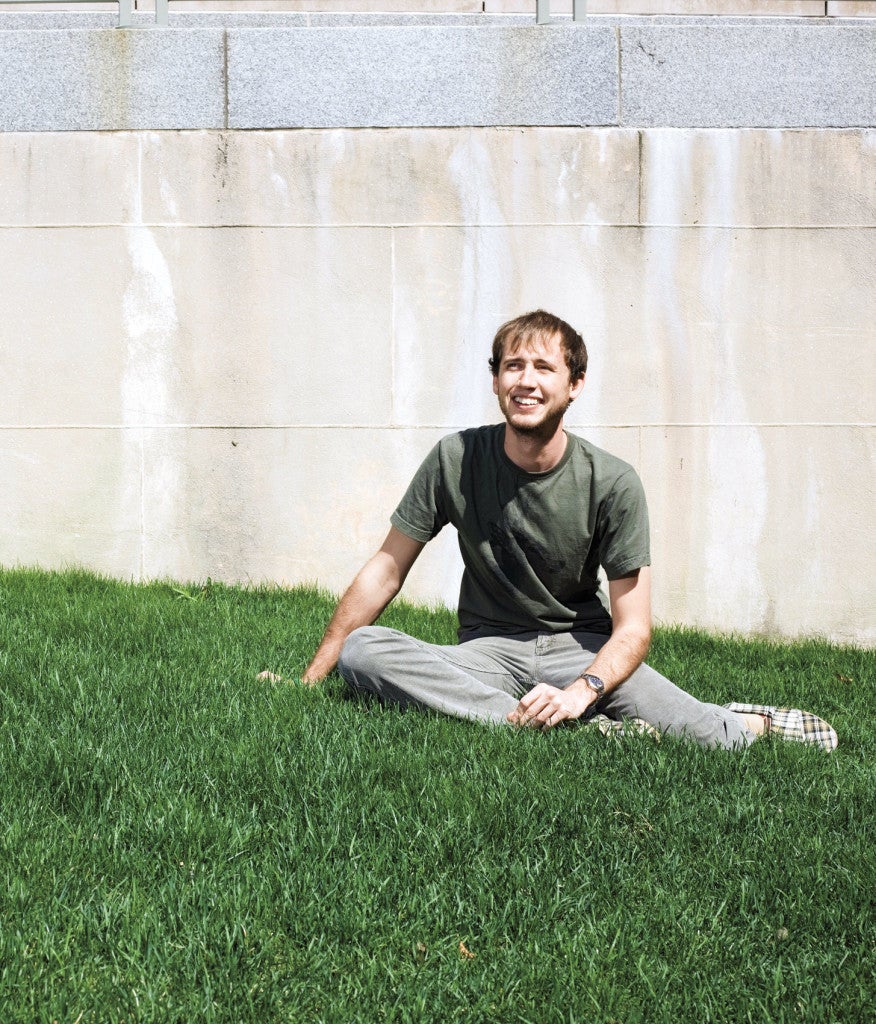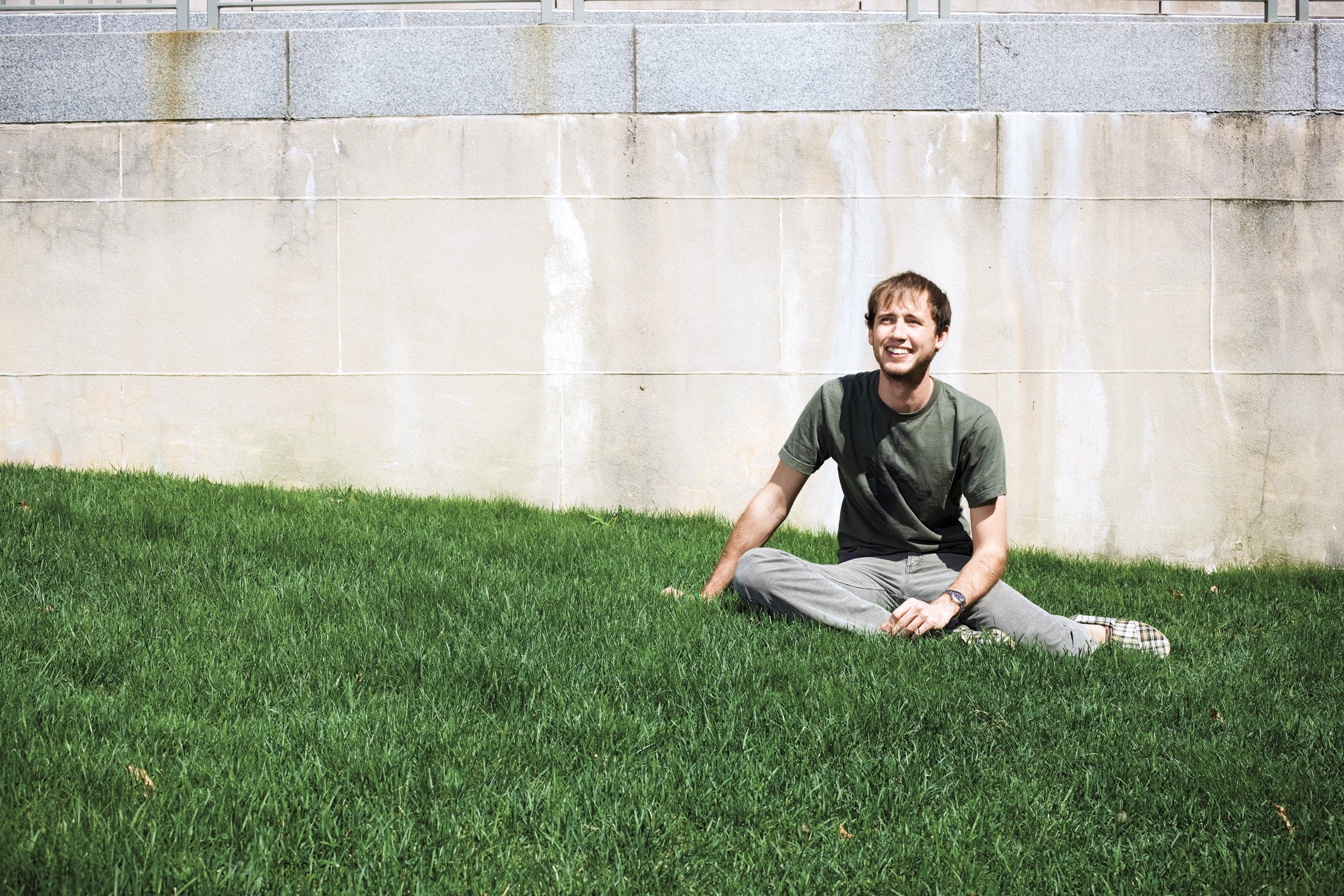A new clinic lets students step up to environmental challenges—and onto the first rungs of their careers
In October 2007, Kansas Secretary of Health and Environment Roderick L. Bremby denied an application for two new coal-fired power plants, basing the decision explicitly on concerns about carbon dioxide emissions and global warming. It was the first time that a high-level government official in the U.S. has denied such a permit on those grounds.
When Wendy B. Jacobs ’81, director of the HLS Environmental Law and Policy Clinic, heard about Bremby’s decision, she knew what would come next: lawsuits. It was just the kind of novel opportunity she was seeking for her students. So she phoned Bremby’s office and said she had an offer he couldn’t refuse: “We at the Harvard Law School Environmental Law and Policy Clinic want to help defend you.” Bremby accepted, and was soon receiving advice and briefs from Jacobs and the Harvard Law students working in the clinic.
Jacobs came to the law school last summer, charged with creating a hands-on legal clinic in which students could put their academic knowledge of environmental law to practical use. She has drawn on her 27 years of environmental work and connections to create a wide-ranging set of opportunities for the more than 20 students who have joined the clinic in its inaugural year. In addition to the Kansas litigation, students have worked on a broad variety of projects. They’ve submitted comments to the Federal Trade Commission, urging it to toughen its guidelines on what manufacturers can say about the environmental friendliness of their products. They’ve weighed in with the U.S. Environmental Protection Agency, explaining why its jurisdiction to regulate air pollution extends to emissions by foreign ocean-going vessels that dock in U.S. ports. They’ve created a set of consumer-friendly brochures to facilitate the purchasing of renewable energy. One student has assisted a national investor advisory group in promoting better corporate environmental policies. Others have worked with the Massachusetts Department of Environmental Protection, the Conservation Law Foundation or the Environmental Law Institute.
“There’s an old model of environmental program that was created in the ’80s, where students would go sue polluters and primarily learn about litigation. Our vision is very different,” says Jacobs. “It’s about training students to do a whole range of things now that we have a very different set of environmental problems—especially problems around climate change and global warming.”
The Kansas Case

When she wasn’t attending class or studying cases this spring, Alison C. Healey ’08 was writing memos for Secretary Bremby. She and other ELPC students met weekly with Jacobs to share what they had learned reviewing the administrative record and the voluminous comments on Bremby’s denial of the permit application.
Last November, shortly after Bremby killed the plans for the coal-fired plants, he and his department were sued in Kansas State Court by Sunflower Electric Power Corp., Tri-State Generation and Transmission Association, the Board of Commissioners of Finney County, Kans., and the Garden City Area Chamber of Commerce. The suit claims that, in denying the application, Bremby acted unlawfully by altering public policy in the absence of state or federal laws governing carbon dioxide emissions. Bremby answered that it was within his capacity as secretary of health and environment to deny the permit application. (In an unusual move, the Kansas Supreme Court took the case sua sponte and, after briefing, retained jurisdiction but remanded for further administrative proceedings—a victory for Bremby.)

Along with Jacobs and attorneys for the Kansas Department of Health and Environment, the students drafted two briefs in the case. They also made careful study of the interplay between applicable state and federal regulations. “I didn’t realize how intricate and detailed environmental work was,” says Healey. “We’re working with real clients on issues that have implications for the future. It’s my generation’s responsibility to be raising awareness about environmental issues and developing a plan of action.”
Healey was also struck by the onslaught of shifting deadlines that govern law practice. “It’s been eye-opening,” she says. “In law school, we live in a bubble. This case has set deadlines and issues that change from week to week.”
As in real practice, that sometimes means dropping everything else to do something for your client. That’s what three students working on the Kansas litigation did when they learned that Bremby had been summoned to testify in front of the U.S. House Select Committee on Energy Independence and Global Warming. Kansas Team Leader Jimmy Richardson ’09, along with classmates Neil Gormley and Eric Ritter, learned on a Monday that Bremby would be testifying three days later. So they jumped on a plane to Washington to help prepare Bremby for his appearance.
For Richardson, who had spoken with Bremby on the phone, the D.C. trip was the first chance to talk with his client face to face. “It was an amazing honor to meet this gentleman, who really is something of an environmental hero,” Richardson says.
With the hands-on experience he has gained in the case, Richardson is ready for his summer job doing environmental work in the Massachusetts Attorney General’s Office. After graduation, he plans to pursue a public interest job in environmental enforcement.
The Ceres Project

Jim Krenn ’08 majored in finance at the University of Notre Dame, and while at HLS, he has been actively involved with Harvard University’s Green Living Program, which encourages students university-wide to conserve, recycle and live sustainably. For him, the ELPC was a way to blend his twin interests in finance and the environment.
Jacobs strives to tailor clinical opportunities to individual students. Given Krenn’s interests, she found an opportunity for him to intern with Ceres during the fall of his 3L year. Based in Boston, Ceres is a national coalition of investors, environmental organizations and other public interest groups working with companies and other institutions to address sustainability challenges such as climate change. Its mission is to integrate sustainability into capital markets.
Krenn’s work with the coalition focused on developing a petition to the U.S. Securities and Exchange Commission, encouraging it to ask for more disclosure by companies about their environmental impacts. “Environmental reporting by companies is either not there or very inconsistent,” says Krenn. “There’s little ability for investors to compare different companies and how they are managing risk. The petition was geared toward increasing transparency.”
Krenn dug through 10-Ks and other financial reports to analyze corporate disclosure practices. He also prepared a memo describing current climate change litigation throughout the U.S. He found that there has been an uptick in the number and scope of lawsuits asking for injunctive relief related to climate change, although few of them have been successful. He believes that will change, however, in the same way tobacco and asbestos lawsuits eventually made headway.
“Traditional law school classes are very heavily based on reading cases,” says Krenn, who will be an associate at the San Diego office of Morrison & Foerster in the fall. “To be able to take a more practical, hands-on approach adds a further dimension to working with the theory.”
Consumer Guides and Ships in Port
Benjamin Thibault ’09 isn’t interested in litigation. What drew him to the Environmental Law and Policy Clinic was the policy aspect.
Thibault describes himself as “a headstrong environmentalist.” His e-mails end with a message to readers in two languages: “Before printing, think about the Environment. Avant d’imprimer, il faut penser l’environnement.” He is working for Greenpeace in Amsterdam this summer (and is one of five students receiving summer funding from the Environmental Law Program’s newly established Covey Fellowships).
In his clinical project, Thibault is team leader of an effort to create user-friendly consumer guides to purchasing renewable energy in the six New England states plus New York and New Jersey. The guides will help consumers understand the various options available for purchasing and/or subsidizing the development of clean energy. They will also explain state rules about how consumers can choose one form of energy—such as geothermal—over another—such as wind or solar. And they will include guidance on tax credits and installation of systems that generate power. Guides for all eight states were expected to be completed by the end of the semester.

“People don’t have time to figure out if they can buy green energy directly or buy renewable energy credits,” says Thibault. “Our goal is to help them figure out their options in layman’s terms and reduce their transaction costs.”
Before working on the energy guides, Thibault joined other students in the clinic to draft a comment-letter to the EPA, on behalf of the Environmental Defense Fund, on how the EPA should regulate emissions from vessels in ports. Ships spew ozone and noxious chemicals from burning marine diesel. The pollution affects the often economically disadvantaged and minority communities that live nearby. And, Thibault explains, many commercial vessels belong to countries, such as Liberia and Panama, which have lax regulations. The clinical students argued that the EPA has the authority to regulate vessels that sail under the flags of foreign countries, even though it has never done so before.
It was a valuable experience for Thibault, a Canadian who would like to eventually pursue environmental policy work in Canada. “It was good to get our arguments out there,” he says. “It was good to point out to the EPA how egregious it is to not act.”
Michelle Bates Deakin is a freelance writer living in Arlington, Mass.
